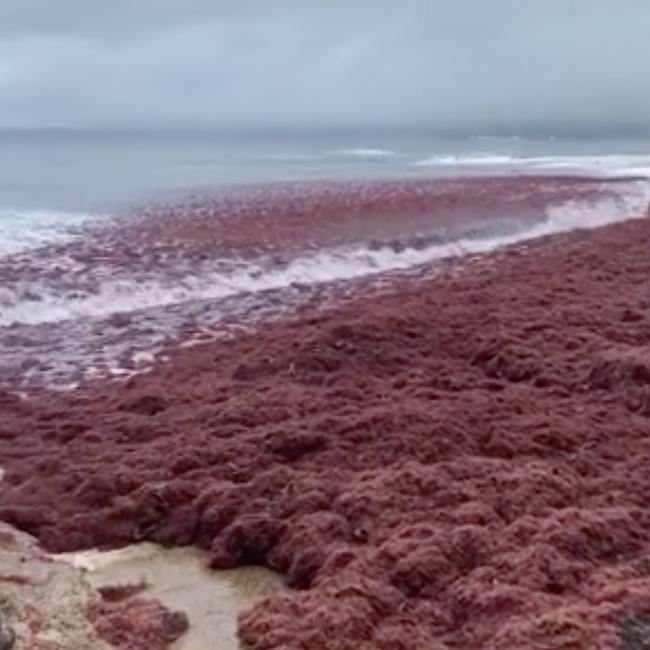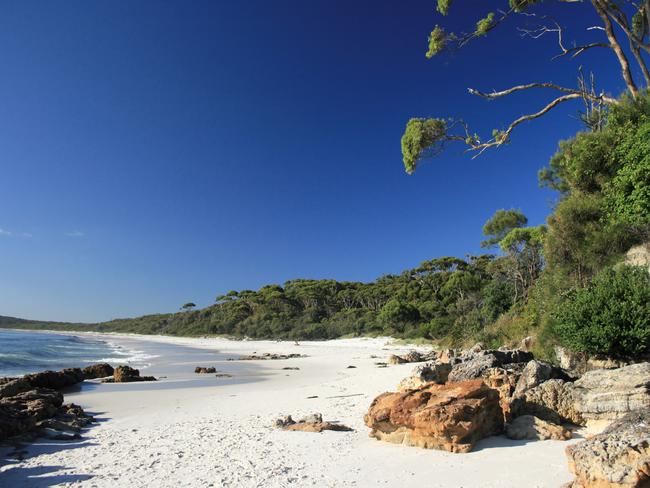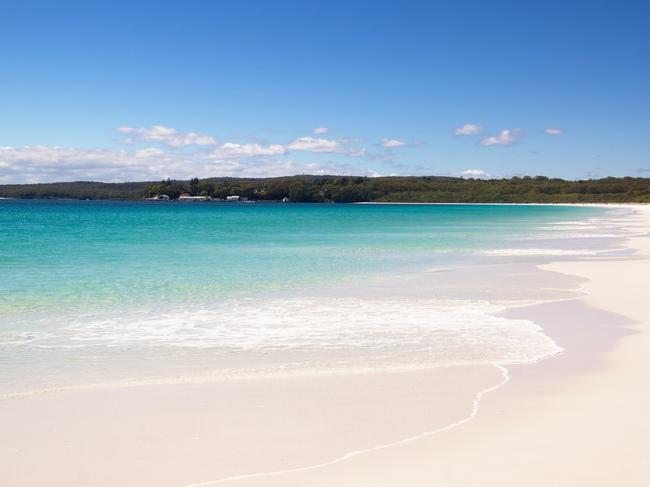Red algae filled with maggots covers Hyams Beach in Jervis Bay
The wild weather across NSW has had a dire impact on the beach with the “whitest sand in the world”, with one disgusted local filming the maggot-filled algae.
The NSW beach that has long been regarded as having the whitest sand in the world has temporarily lost its title after this week’s wild weather.
Hyams Beach, in the Jervis Bay region on NSW’s south coast, is one of the most popular in the state thanks to its crystal clear, turquoise water and squeaky, blinding white sand.
But thanks to this week’s east coast low, that saw parts of NSW suffer its worst flooding event in history and dangerous weather all week, the iconic Hyams was looking a little different.
Local Jayde Clarke took to Facebook to show what the usually picturesque beach looked like following the storms and huge swells, that forced a massive algae bloom to be pushed onshore.
Want a streaming service dedicated to news? Flash lets you stream 25+ news channels in 1 place. New to Flash? Try 1 month free. Offer ends 31 October, 2022 >

Speaking to the Daily Mail, Ms Clarke described the red seaweed dump as a “monstrosity”.
“My husband and I go surfing out there all the time so we wanted to see how the sets were rolling in and then we saw that monstrosity,” she said.
Ms Clarke said the beach smelt badly and she spotted “thousands” of maggots wriggling in the drying seaweed.
“We were completely in shock - in the whole 25 years my husband had lived here he had never seen anything like it,” she said.


The bizarre phenomenon is nothing compared to what the Yucatán Peninsula is dealing with in Mexico, the nation’s most popular tourist destination.
For years now, seaweed, known as sargassum, has drifted from Brazil up to Mexico and is pushed by waves onto the region’s iconic white sand beaches.
When it dries, the sargassum gives off a rotten egg smell.
The issue has cost the Mexican government tens of millions of dollars as they try to fix the problem.
Speaking about the Hyams Beach issue, Dr Trudy Costa from the University of Wollongong‘s School of Earth, Atmospheric and Life Sciences said despite the bad smell from this type of algae, it wasn’t dangerous to humans.
Dr Costa said the algae was not sargassum but likely gracilaria edulis, solieria robusta or a species of chondria.
“It most likely washed up as a result of the recent weather and storms - this is called ‘wrack,” Dr Costa told the South Coast Register.
“There could be maggots within it as there are many tiny organisms that live in the algae that then die when it is washed up on the shore.
“Wrack can be smelly if it sits there for a while but it is really important ecologically. As it breaks down, it delivers nutrients and food to the organisms that live in the sand underneath - this is their main source of food.”


